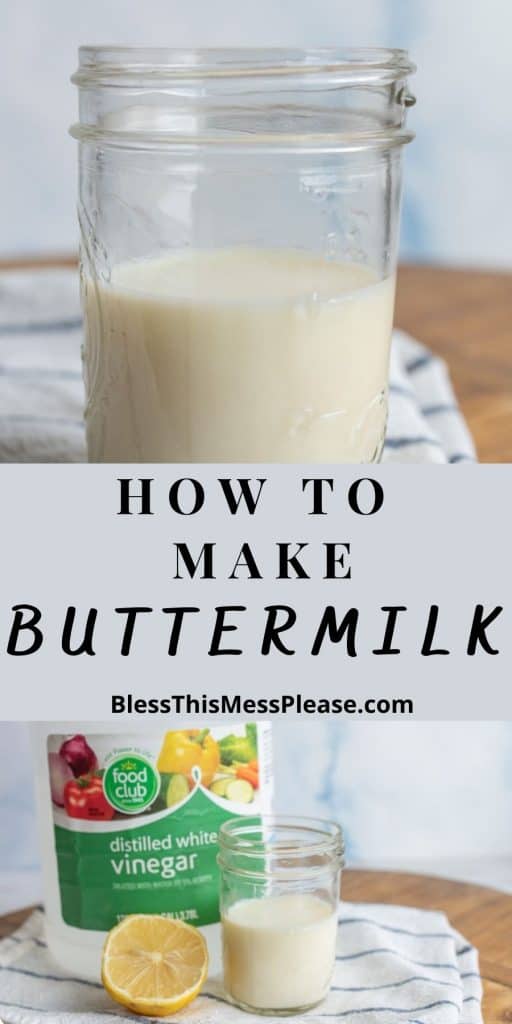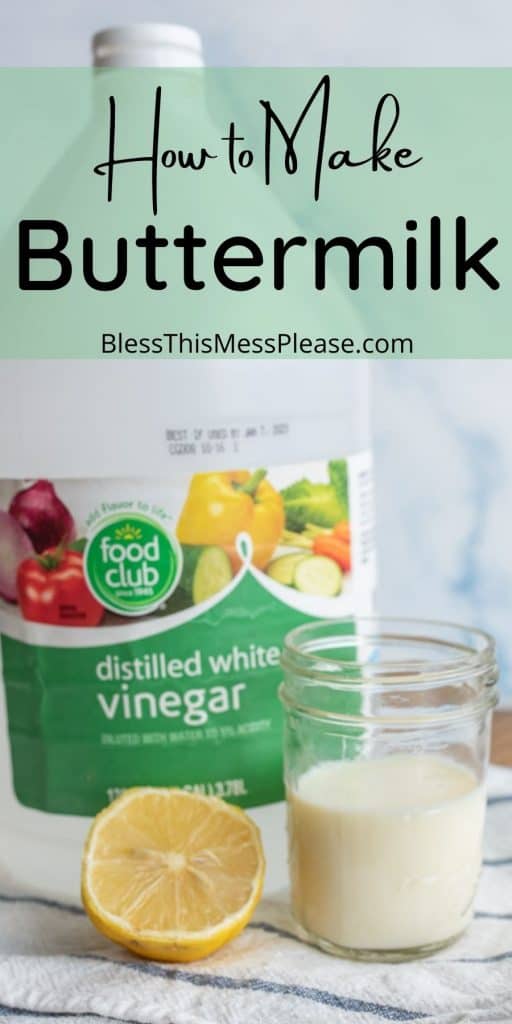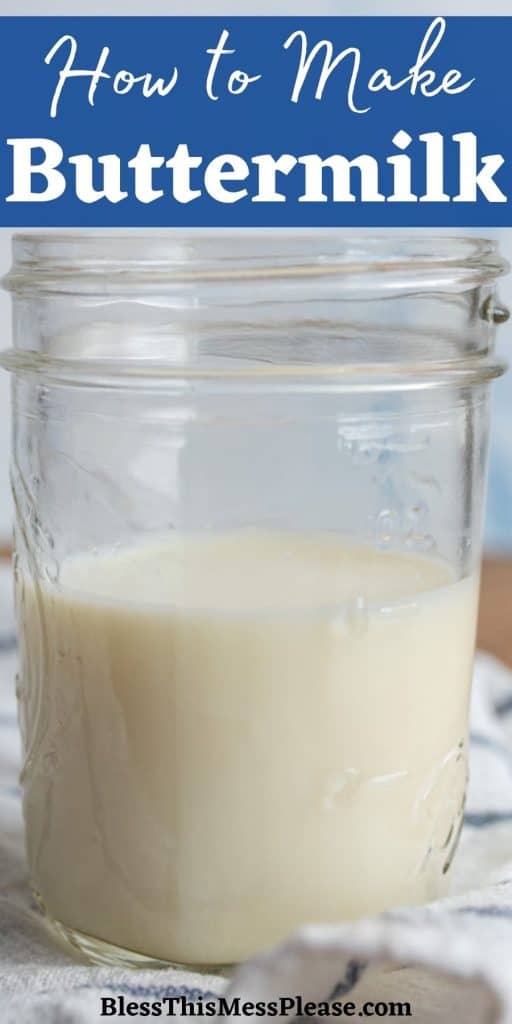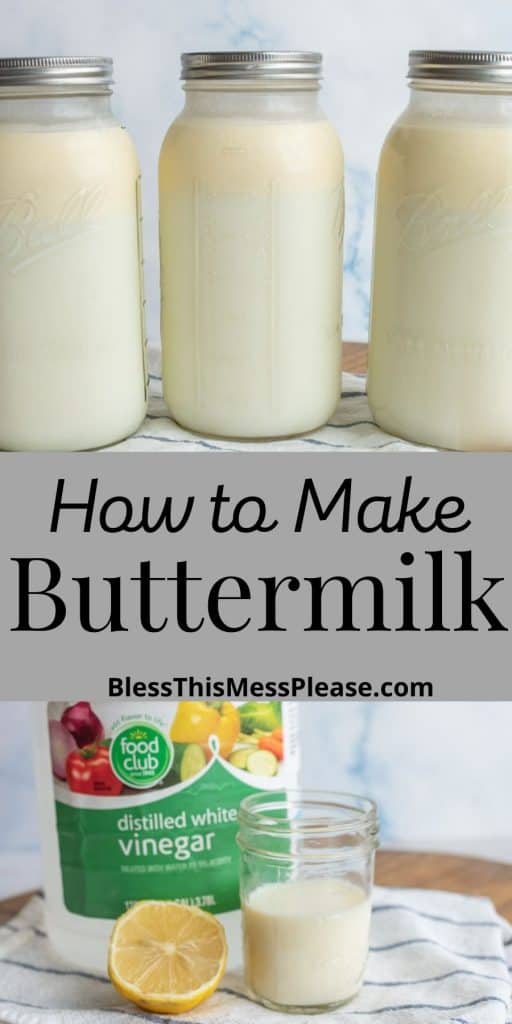Buttermilk
on Mar 08, 2021, Updated Jun 23, 2024
This post may contain affiliate links. Please read our disclosure policy.
Everything you ever wanted to know about Buttermilk all in one place. I’ll teach you what it is, why you use it, and how to make it at home in case you need a baking emergency substitution.
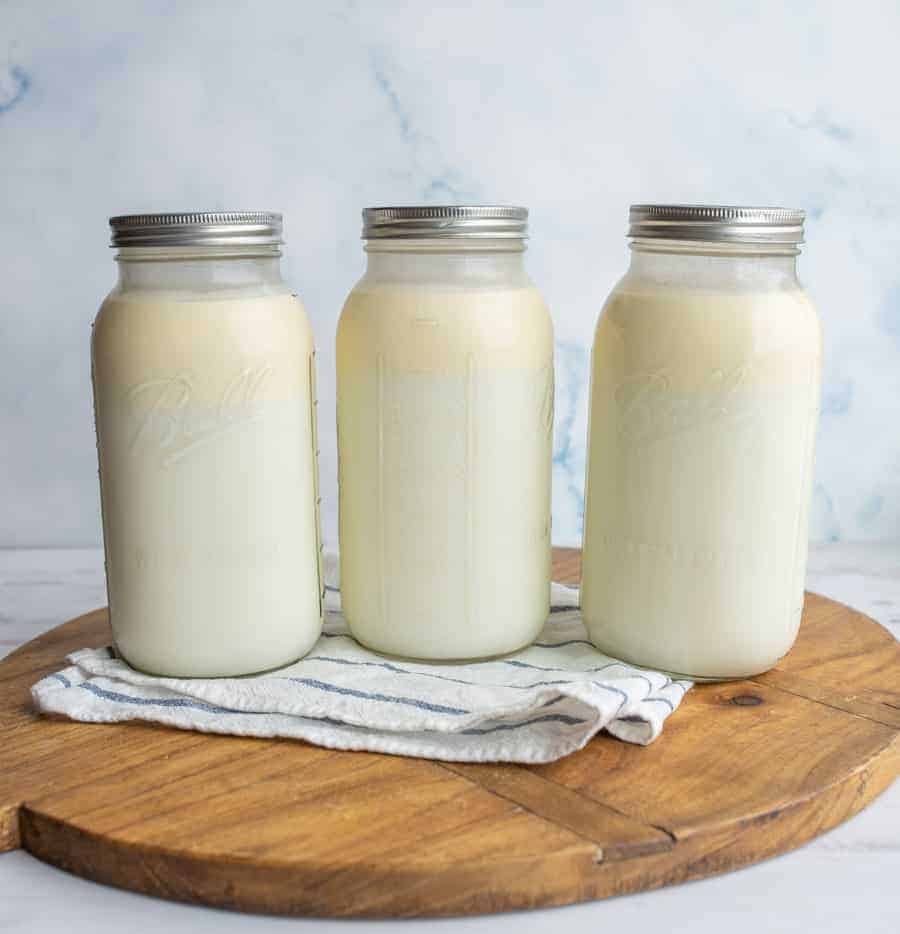
Buttermilk is a bakers dream. It makes baked goods light, fluffy, and helps them rise as a leavening agent. I’m sharing all of my tips and tricks about buttermilk.
This post is about what buttermilk is as well as how to make substitutions at home in case the recipe you are working with calls for it and you don’t have any on hand. It’s a cool ingredient! Try using it in my buttermilk pancakes, buttermilk biscuits, or buttermilk fried chicken.
Table of Contents
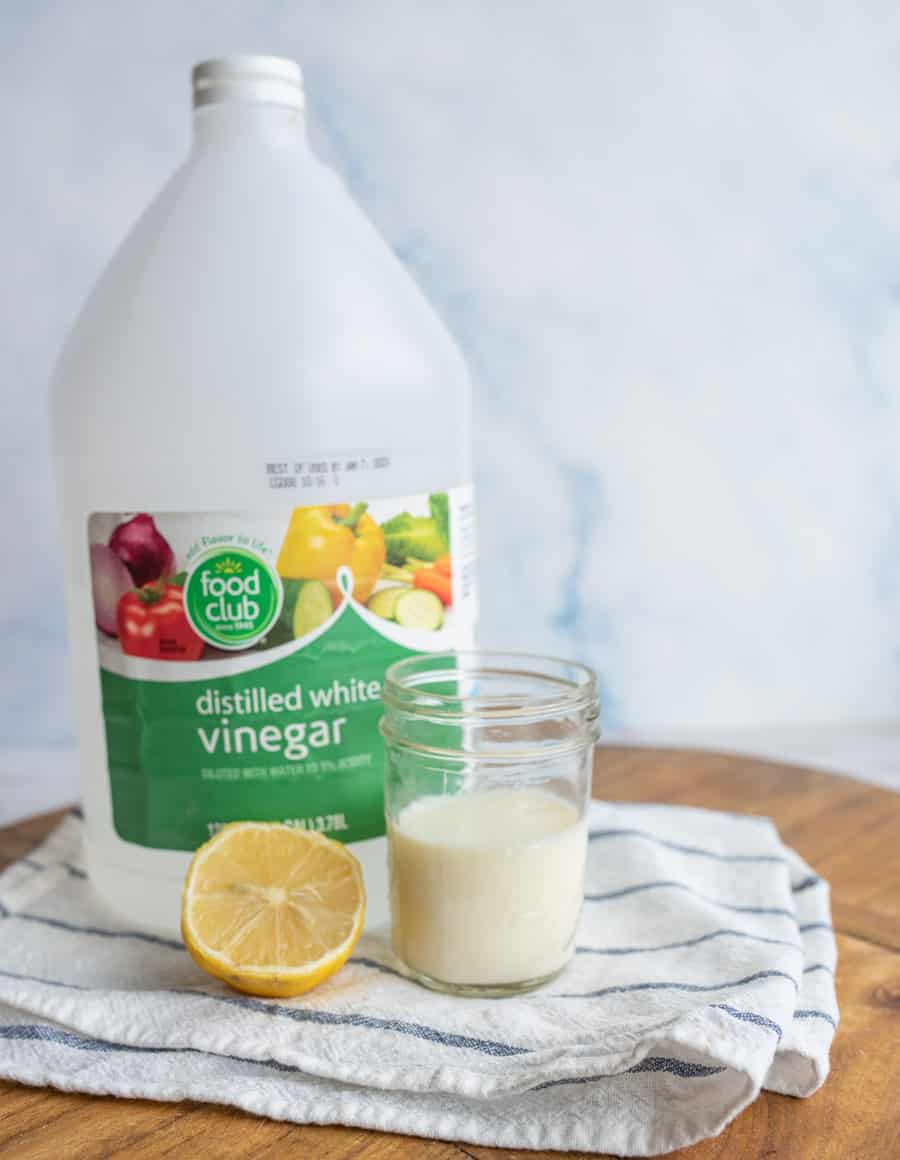
Why You’ll Love This Recipe
- You will learn all the ins and outs of buttermilk.
- This is a perfect at home substitute if you don’t have buttermilk on hand.
- Buttermilk helps with leavening and fluffiness without adding any extra fat.
Recipe Ingredients
- White vinegar – Or lemon juice
- Milk
See the recipe card below for full information on ingredients and quantities
Popular Substitutions and Variations
Another method is to whisk 1/4 cup milk into 3/4 cup plain yogurt. This will create a nice and thick buttermilk substitute.
You can also use milk and sour cream as a buttermilk substitute. Whisk together 3/4 cup sour cream and 1/4 cup milk until you get a thicker consistency that resembles buttermilk.
How to Make Buttermilk
Step 1. Measure the vinegar or lemon juice into your measuring cup and then fill it the rest of the way with your milk.
Step 2. Gently stir the mixture together.
Step 3. Let mixture sit for 5 minutes.
Step 3. Use in your recipe in place of the buttermilk called for.
Buttermilk today is different than the buttermilk your grandmother was making. Traditionally, buttermilk was the liquid that was left over after churning butter. Hence, the name buttermilk, even though it contains no butter.
Today, buttermilk is made by adding bacteria cultures to regular milk and then fermented for several hours at a low temperature. This fermentation process converts the milk sugars into lactic acid. The lactic acid combined with baking soda is enough to make bakers drool. It’s similar to making yogurt!
Buttermilk helps with leavening and fluffiness without adding any extra fat. Buttermilk is thicker than regular milk but not as thick as cream and has a lower fat content than regular milk. It is the ingredient that makes pancakes fluffy, biscuits light, and cakes tender among other things. Buttermilk is also used in dips and dressings because of the thick nature and slightly tangy taste.
We’ve all been there. You are neck deep in a recipe and you realize you forgot to pick up buttermilk from the store! Worst thing ever, right? But have no fear! Did you know you can make a killer buttermilk substitute at home? It’s kind of life changing once you know this little hack.
There are a few different ways to substitute buttermilk. My go-to is adding 1 tablespoon of lemon juice or white vinegar to a 1-cup measuring cup and then fill the rest of the cup with milk. Stir the mixture and let it sit for a few minutes. The acid will curdle the milk slightly.
Another method is to whisk 1/4 cup milk into 3/4 cup plain yogurt. This will create a nice and thick buttermilk substitute.
You can also use milk and sour cream as a buttermilk substitute. Whisk together 3/4 cup sour cream and 1/4 cup milk until you get a thicker consistency that resembles buttermilk.
Buttermilk should stay fresh in fridge for about 2+ weeks. It typically stays fresh longer than other dairy products. Buttermilk also freezes really well.
Buttermilk is much lower in fat than you might think. It is also full of potassium, vitamin B12, calcium, and phosphorus. Buttermilk is a great source of probiotics that can aid in digestion.
It is the ingredient that make pancakes fluffy, biscuits light, and cakes tender among other things. It acts as a leavening agent and keeps baked goods moist.
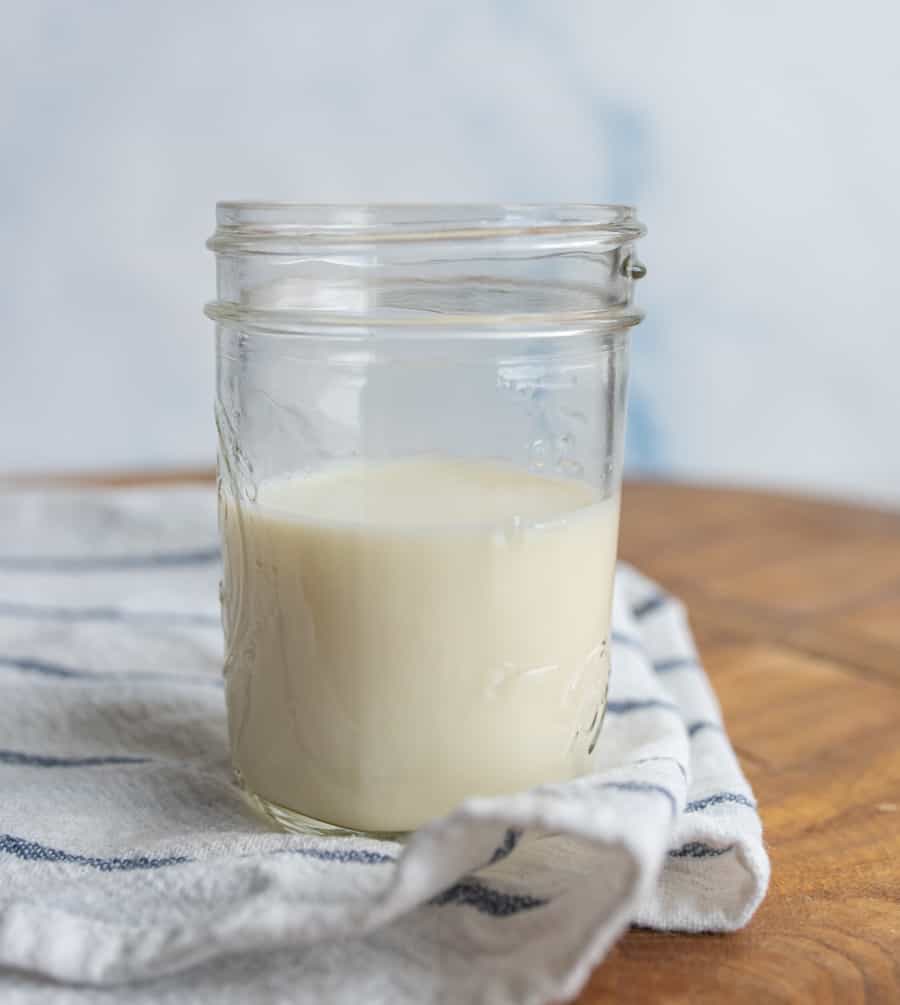
Expert Tips
- Use white vinegar or lemon juice to sour milk for a quick buttermilk substitute.
- Let the mixture sit for 5 minutes to allow the acid to fully react with the milk.
- For a thicker buttermilk substitute, whisk together milk and plain yogurt or milk and sour cream.
- Adjust the amount of milk and vinegar/lemon juice based on the quantity of buttermilk needed in your recipe.
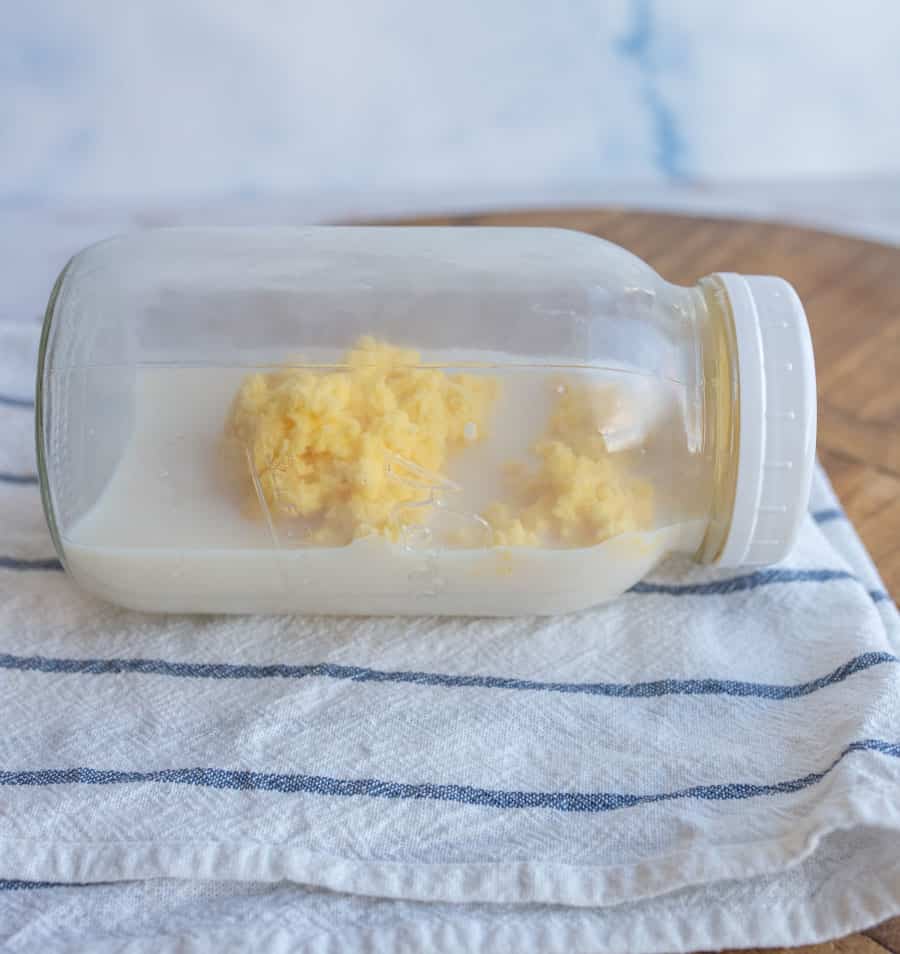
How to Store and Serve Buttermilk
You can add buttermilk to just about anything. Try it in my pumpkin buttermilk pancakes, buttermilk pie, homemade buttermilk syrup (great on waffles and German pancakes), buttermilk biscuits, or classic fluffy buttermilk waffle recipe.
Buttermilk should stay fresh in fridge for about 2+ weeks. It typically stays fresh longer than other dairy products. Freezing buttermilk is a great way to extend its shelf life. When you’re ready to use the frozen buttermilk, transfer the desired amount to the refrigerator and let it thaw overnight. Shake or stir the thawed buttermilk before using to blend any separated components.
Did you make this recipe? Leave a ⭐️ review and share it on Instagram, Facebook, or Pinterest!
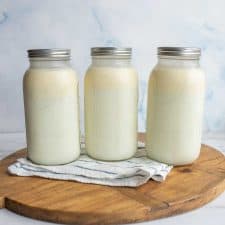
Buttermilk
Ingredients
- 1 tablespoon white vinegar OR lemon juice
- 1 cup milk
Instructions
- Measure the vinegar or lemon juice into your measuring cup and then fill it the rest of the way with your milk (so you’ll actually need a tablespoon less of milk than a full cup because that 1 tablespoon is your vinegar or lemon juice).
- Gently stir the mixture together.
- Let mixture sit for 5 minutes.
- Use in your recipe in place of the buttermilk called for.
Notes
|
|
|
|
|
|
|
|
|
|
|
|
- Another method is to whisk 1/4 cup milk into 3/4 cup plain yogurt. This will create a nice and thick buttermilk substitute.
- You can also use milk and sour cream as a buttermilk substitute. Whisk together 3/4 cup sour cream and 1/4 cup milk until you get a thicker consistency that resembles buttermilk.

